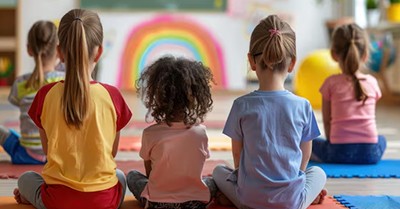A: Group time is not strictly necessary, but when thoughtfully designed, it can be a powerful tool for fostering connection, communication, and community in early childhood settings.
Why Group Time Can Be Valuable
- Social development: Children learn to take turns, listen, share ideas, and collaborate.
- Community building: Gathering as a group fosters a sense of belonging and shared identity.
- Language and communication: Singing, storytelling, and discussion support expressive and receptive language skills.
- Routine and predictability: Regular group time can anchor the day and help children feel secure.
- Introduction of new concepts: Educators can use group time to spark curiosity and scaffold learning through shared experiences.
When Group Time Might Not Work
- Large groups or mixed developmental stages: These can lead to disengagement, behavioral challenges, or overstimulation.
- Rigid formats: If group time feels performative or overly structured, it may lose relevance for children.
- Lack of emotional safety: Children may feel pressured to participate or exposed in ways that undermine confidence.
How Long Should Group Time Be For Toddlers and Preschoolers
Group time for toddlers should be kept very short—around 5 minutes—and preschoolers can gradually build up to 10–15 minutes depending on their readiness and engagement.
Here’s a breakdown based on developmental needs and best practice insights:
Recommended Group Time Durations
| Age Group | Suggested Duration | Notes |
|---|---|---|
| Toddlers (18–36 months) | 5 minutes or less | One active song or short story is ideal. Watch for signs of restlessness. |
| Preschoolers (3–5 years) | 10–15 minutes | Can be extended gradually as attention spans grow. Flexibility is key. |
Developmentally Responsive Tips
- Start with movement or music: These help regulate energy and ease transitions.
- Use visual or symbolic cues: Props, puppets, or mood cards can anchor attention.
- Offer opt-in participation: Let children choose how they engage—listening, moving, or observing.
- Watch for overstimulation: If children become fidgety or withdrawn, it’s time to wrap up or pivot.
Flexible Formats to Try
- Mini Circles: 2–3 children at a time, focused on a shared interest.
- Rolling Rituals: Short group moments embedded throughout the day (e.g., morning hello, story spark, goodbye song).
- Choice-Based Gatherings: Children choose between story, song, or movement circles.
Making Group Time Meaningful
- Keep it flexible: Allow spontaneous or small-group gatherings based on interest and emotional readiness.
- Center children's voices: Use open-ended questions, symbolic props, or co-created rituals to invite authentic participation.
- Respect neurodiversity: Offer opt-in options, sensory supports, or parallel play opportunities.
- Reflect and adapt: Regularly evaluate whether group time is serving its purpose—or simply filling a schedule.
Group time isn’t a one-size-fits-all solution. It’s a relational tool that, when used with emotional intelligence and cultural sensitivity, can nurture deep learning and connection. If it’s not working, that’s not a failure—it’s an invitation to redesign.
Further Reading
Group Time With Children In Childcare
Strategies To Support Children Who Struggle With Circle Time
Group Learning In Early Childhood Settings
